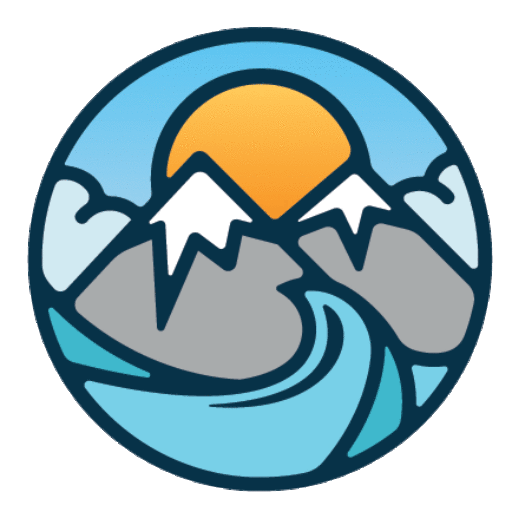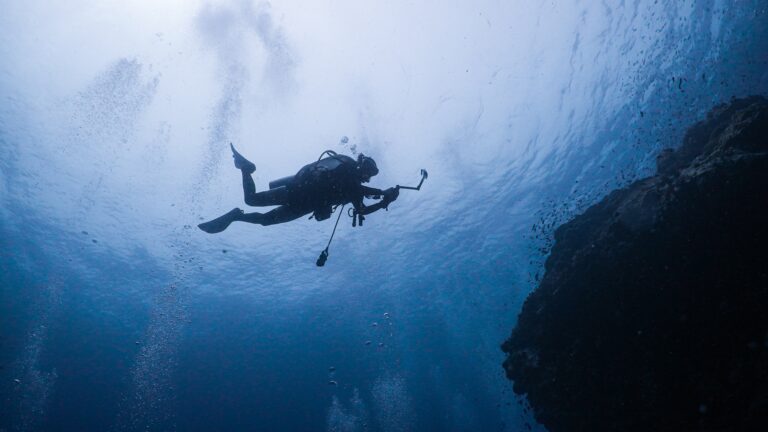Table of Contents
How can I learn to scuba dive?
Becoming a scuba diver is an adventure few people can claim as their own. The certification process includes three phases:
1. Knowledge Development
During the first phase of your scuba lessons, you’ll learn basic principles and procedures in scuba diving such as
- What to consider when planning dives.
- To choose the right scuba gear, one should take into consideration
- Underwater signals and other diving procedures.
By reading the PADI Open Water Diver Manual or using the eLearning, you’ll learn valuable knowledge to complete your open water dive course. Let your instructor know if there is any aspect of scuba diving you do not understand. Once the course has ended, you will be given a final exam to determine whether or not you have sufficient knowledge of the basics.
You will also watch videos that preview the scuba skills you’ll practice in a swimming pool or other similar environment. Your instructor will demonstrate each skill as part of the video.
2. Confined Water Dives
This is what it’s all about – diving. You’ll get basic scuba skills in a swimming pool or other confined body of water, like off the beach. Scuba certification is an important step to becoming comfortable in the water. Skills like independent breathing, buoyancy, and locating equipment are all helpful for underwater exploration. some of the essential skills below:
- Setting up your scuba gear.
- How to get water out of your mask.
- Entering and exiting the water.
- Buoyancy control.
- Basic underwater navigation.
- Safety procedures.
If you’re new to diving, we’ll pair you with an instructor who will teach you the skills necessary to do a dive. Once you feel confident enough, it’s time for your first open water dive to begin at another site.
3. Open Water Dives
After completing your confined water dives, you will move to open water for four additional dives. One of the best ways to finish your PADI training is by taking advantage of international dive opportunities. You can do local dives, or go on a holiday and take another country’s PADI Instructor that has been referred to you upon completion with it.
How long does it take to get certified?
The PADI Open Water Diver course is set up to allow for flexibility and self-paced learning. This allows your PADI dive shop to offer a variety of schedules focused on the pace which fits you best. It’s possible to complete your confined and open water dives in three or four days by completing the knowledge development portion via PADI eLearning, or other home study options offered by local dive shops.
Your PADI instructor won’t be grading your class on how long it takes you to complete all the dives, but rather making sure that you become confident in yourself and comfortable in the water. Your certification is attained by demonstrating that you know what you need to know and can do what you need to do. This means that you progress at your own pace – faster or slower if necessary – until becoming a competent scuba diver.
How much do scuba lessons cost?
Compared with other popular adventures like rock climbing, scuba diving doesn’t run as expensive.
Learning to scuba dive is a great value since you get your under the guidance and attention of a highly trained, experienced professional – your PADI Instructor.In addition to receiving a certification at the end of your course, you also get an introduction to scuba diving.
Scuba diving starts to change the life of those who try it when they do new things and share with friends.Discover how to start taking your first breaths underwater! You can sign up for a course at a PADI Dive Center or Resort nearby. All PADI dive centers and resorts are independent, so prices will differ depending on the location, size of class, etc.
Choosing and using scuba gear is an important part of the enjoyment of diving.If you are interested in scuba diving, it is important to know the different types of scuba gear.
When you learn to scuba dive, at the least, you will want your own
- Mask
- Snorkel
- Fins
It is important to purchase a set of scuba gear that fits your personal needs. A shop near you will help make this selection process easy.
During your PADI Open Water Diver course, you’ll learn about responsible use of a scuba tank on the water surface and underwater, using buoyancy control devices (BCD), diving plans or computers as well as how to account for excess weight during dives.Before you register for the course, check what equipment is included in your package. You might want to buy all of your equipment instead but:
- You will feel more comfortable learning to scuba dive with equipment that you have handpicked.
- You’ll be more comfortable using scuba gear tailored for your body as compared to standard-sized diving equipment.
- Scuba divers who own their dive equipment find it easier to go diving.
- Having your own scuba gear is one of the many joys of diving.
What are the requirements for learning to scuba dive?
If you have an affinity for adventure, you may consider taking classes to become a PADI Diver. You’ll also want to keep in mind these requirements:
The minimum age for zoning is 10 years old in most areas.Teenagers who are younger than 15 earn the PADI Junior Open Water Diver certificate and can upgrade to the PADI Open Water Diver certificate when they’re fifteen.Children under the age of 13 may register for PADI eLearning with their parent or guardian’s permission.
The first step in becoming a student scuba diver is completing the scuba medical questionnaire which asks about any conditions that could be problematic to dive with. If you do not have any of these conditions, sign the form and you’re ready to go. For those with one or more, your doctor will assess whether they can dive without safety concerns first. Local laws may require that all new scuba students see a medic before diving; download the medical questionnaire here.
Before becoming a PADI Open Water Diver, an instructor will have the student practice basic water skills for comfort and safety.
- Swim 200 metres/yards (or 300 metres/yards in mask, fins and snorkel) without stopping. There is no time limit for this, and you may use any swimming strokes you want.
- Float and tread water for 10 minutes, again using any methods you want.
Individuals with physical disabilities are not automatically barred from certification if they can meet the performance requirements. Adaptive techniques exist that allow many people to engage in adaptive activities despite their disabilities. Individuals with a physical disability, amputation or other challenge can earn their PADI Open Water Diver certification. Your local dive center or resort will provide more information if you’re interested in diving with your challenges.
Diver must have a personal set of the learning materials to use during and after the course. There are various options available, depending on your preferred learning style and technology usage. Options include:
PADI Open Water Diver eLearning
PADI Open Water Diver Manual, and watching the Open Water Diver Video on DVD either on your own or with your instructor
Your local PADI dive school can provide you with the logbook, storage unit, and other necessary gear as part of their enrollment process.
Your logbook is a physical document that contains information about the courses you’ve taken and formalizes your licensing certification for future use – it’s often mandatory to have one before diving. Your instructor will have you use the PADI Skill Practice and Dive Planning Slate during training, and you’ll find this tool useful once you’re certified.
Do you need to be a good swimmer in order to scuba dive?
Basic swimming skills are required. Your PADI Instructor will assess that you:
Pace yourself to maintain a relaxed body position.
Kick with straight legs, keeping your feet in contact with the bottom of the pool.
Reach for stability on every arm stroke and extend your body sideways from your hip during breathing pauses.
- Swim 200 metres/yards (or 300 metres/yards in mask, fins and snorkel). There is no time limit for this, and you may use any swimming strokes you want.
- Float and tread water for 10 minutes, again using any methods you want.
The majority of people who are challenged physically can participate in the PADI Open Water Diver course. Chat with your instructor at a local dive center for more information.
Where can I scuba dive?
You can scuba dive almost anywhere. Some of the most popular locations are:
- Tioman, Malaysia
- Mexico
- Australia
- Phuket & Thailand
After you’ve completed a PADI Open Water Diver course, your dive options are limited to climates that support diving. Still, there is no shortage of underwater adventure in closer-to-home destinations.
If you want to dive outside of your locale, be sure to have the training and experience needed for that region of the world. Also, make sure to find a trustworthy buddy before taking this dive!
My ears hurt when I go to the bottom of a swimming pool or when I dive down snorkeling. Will that prevent me from becoming a scuba diver?
You are not at risk for ASMR if you do not experience any unusual discomfort in your ears or sinuses. If there were no difficulties adjusting when flying, it is likely that you’ll be just fine with pressure changes as well.
Will a history of ear troubles, diabetes, asthma, allergies or smoking preclude someone from diving?
Diving instructors should be required to consult with DAN if any pre-existing medical conditions are a concern for potential divers.
What are the most common injuries or sicknesses associated with diving?
Diving does come with a few challenges. Sunburn, seasickness, and dehydration can all happen while most injuries are avoidable by wearing an exposure suit, staying off the bottom, and keeping your hands to yourself when you’re in marine life territory.
What about sharks?
There is a chance you’ll see sharks (although it’s very unlikely), but it usually occurs when too much of something with bait triggers shark feeding behavior.
Do women have any special concerns regarding diving?
Aside from pregnancy, no. Because physiologists know little about the effects of diving on the fetus, the recommendation is that women avoid diving while pregnant or trying to become pregnant. Menstruation is not normally a concern.
How deep do you go?
Recreational scuba diving limits are set by level of experience and depth. Beginners should stay in shallower water which is warmer, while intermediate/advanced divers go up to 40 meters/130 feet.
What happens if I use up all my air?
It’s unlikely that you will run out of air while scuba diving, but if it happens there are a few safety steps.
What if I feel nervous or scared?
Scuba diving provides a weightless feeling that many people enjoy. Scuba masks are available with translucent screens, which some people may prefer for the sense of openness. During your scuba instruction, you will have plenty of time to get comfortable and practice different skills. Your instructor stays at your level while they work through each task so you can become an
I’m already a certified diver, how do I become a PADI Diver?
Teaching organizations other than PADI can often help with requirements for the next course level.. If you are already a certified open water diver, then your next step is to enroll in the PADI Advanced Open Water Diver course. Having another certifications does not give you automatic “crossover” qualification. Contact your local PADI Dive Center or Resort to find out about how to continue getting certified with them.

